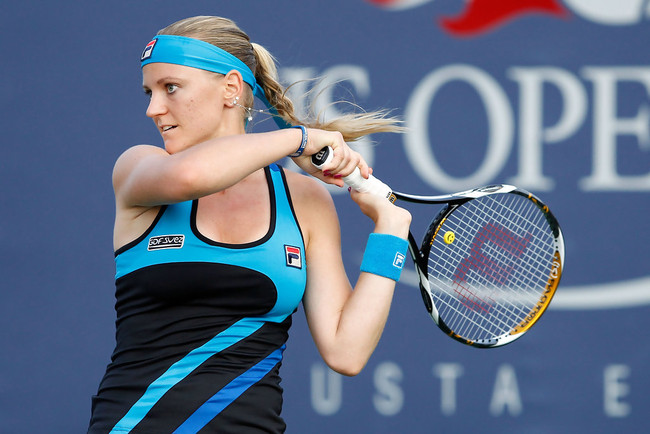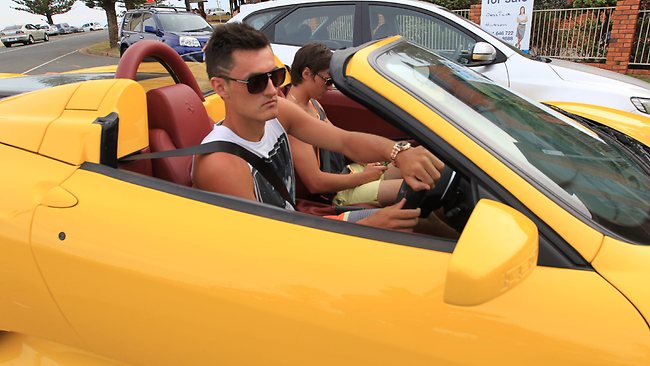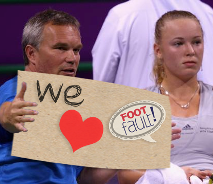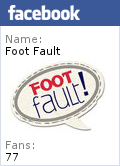Though I caught brief glimpses of her earlier in her career, my first vivid memory of a full Dominika Cibulkova match dates back to her breakthrough tournament at Amelia Island in 2008. Not only was I taken aback at the fact that she stood at just over 3ft8, I was also shocked to see her game wasn’t the scrappy ten-inches-behind-the-baseline retriever it seemed destined to be. Sure, her style of play then revolved around her lightning-quick feet and strong defence, but the shocking part was when she found an opening or a short ball. That’s when she would launch both feet off the ground whilst simultaneously rotating her entire body as she unleashed one of her now trademark nuclear forehands for a screaming, clean winner. During those nice, innocent years, her game was pleasant marriage between defence and offence.
Nearly five years on and in a post-Zeijko Krajan world, adjectives like “pleasant” and “nice” are merely antonyms of the player she is today. Today, she is angry, she is scrappy and she is gritty. She has attitude and she is unafraid to “POME!” in her opponents’ faces with all the authority of a Sharapova or Azarenka nearly double her height. Above all, her sole aim, intention and tactic in tennis these days is to crush every forehand and backhand with seemingly every single muscle, fibre and ounce of effort in her being. That’s how Dominika Cibulkova plays tennis today.
With this new style of play, her scalps and achievements have been undeniable. In addition to finally ending her comically long wait for her first title, she has scaled as high as a slam semi in addition to reaching the quarters of a slam every year since 2009 whilst defeating current and former #1s such as Azarenka, Wozniacki and Sharapova. Even this week she disposed of two top eight players with the loss of only five games before ousting top 5 Kerber to reach the final. At the very least, she was primed to give top-seeded Radwanska a test, right?
Wrong. Instead, she was subjected to an embarrassing and humiliating double bagel.
To Radwanska’s credit, the Pole was on top of the match from the very beginning (well, she hit a double fault on the first point, but you get what I mean). As usual, along with the standard craftiness, she was consistent and sensible and her plan of action was clear; she looked to either cut off Cibulkova’s angles with central balls or else initiated crosscourt rallies, tempting Cibulkova into attacking down-the-line and almost inevitably committing an error. Lather, rinse and repeat. She also read Cibulkova’s groundstrokes like a children’s book. By the end, the Slovak had a shocking 36 (THIRTY SIX) unforced errors in 12 games, even scarier considering the figure probably doesn’t account for the countless botched service returns which usually fall under the forced error category.
The most abhorrent aspect of a result like this isn’t even the score or Radwanska managing to extract a Li-esque error count out of the Slovak. It happens. The biggest issue is that many players who stand inside the baseline and play this unwaveringly aggressive style of tennis have absolutely no choice but to do so, often because their biggest weaknesses are easily exploited in neutral and defensive positions. As mentioned above, this is far from the case with Cibulkova. Her height may leave her susceptible to bigger players overpowering her, but against a player like Radwanska there is no excuse for not once stepping back and at least attempting to tread water a little whilst searching for other ways to insert her aggression and penetrate the Radwanska defence.
And yet, she didn’t. Instead, she finished the match just as it begun - the final game sealed with a smash error, a forehand error, a backhand error, and finally a double fault to complete one of, if not the worst loss of her career. If Cibulkova really wants to bridge the currently realistic gap between her current ranking and the top 10, this must change immediately.








